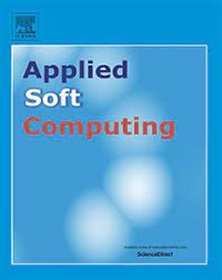A semi-supervised non-negative matrix factorization model for scRNA-seq data analysis
IF 7.2
1区 计算机科学
Q1 COMPUTER SCIENCE, ARTIFICIAL INTELLIGENCE
引用次数: 0
Abstract
Single-cell RNA sequencing (scRNA-seq) technology enables the measurement of cellular gene expression at the single-cell level, thus facilitating cell clustering at the gene level. Despite numerous dimensionality reduction methods developed for scRNA-seq data, many are limited to analyzing individual gene expression matrices and struggle to address false positives and false zero expression entries effectively. Moreover, existing methods often underutilize prior knowledge of similarity and dissimilarity between multi-omics data, leading to the loss of intercellular correlations and shared structural information, thus hindering desired dimensionality reduction outcomes. To address these limitations, a novel model termed joint non-negative matrix factorization with similarity and dissimilarity constraints (SDJNMF) was proposed to tailor for scRNA-seq data clustering. The model leverages prior knowledge of similarity and dissimilarity across multiple gene expression matrices, facilitating joint non-negative matrix factorization to extract common features from multi-omics data. By preserving shared structural and cellular relevance information, SDJNMF enhances the clustering of similar cells while effectively separating dissimilar ones. Furthermore, the SDJNMF model incorporates sparse Singular Value Decomposition during initialization to mitigate noise and redundancy and ensure robust dimensionality reduction. The experimental results demonstrate that the SDJNMF model exhibits superior performance on the 10 datasets, not only outperforming the other 14 algorithms in terms of clustering accuracy on the 9 datasets, but also enhancing the of SDJNMF by an average of 0.0687 in comparison to the second-best algorithm on each dataset. In the visual representation, the model is able to efficiently and accurately cluster similar cells and effectively discriminate different classes of cells from each other. Additionally, the SDJNMF model was applied to identify informative genes and conduct enrichment analysis, validating that genes identified by SDJNMF significantly influence biological processes. Overall, the SDJNMF offers innovative tools for cell cluster identification and advances biological research. The source code of SDJNMF is available online at https://github.com/Jindsmu/SDJNMF.
求助全文
约1分钟内获得全文
求助全文
来源期刊

Applied Soft Computing
工程技术-计算机:跨学科应用
CiteScore
15.80
自引率
6.90%
发文量
874
审稿时长
10.9 months
期刊介绍:
Applied Soft Computing is an international journal promoting an integrated view of soft computing to solve real life problems.The focus is to publish the highest quality research in application and convergence of the areas of Fuzzy Logic, Neural Networks, Evolutionary Computing, Rough Sets and other similar techniques to address real world complexities.
Applied Soft Computing is a rolling publication: articles are published as soon as the editor-in-chief has accepted them. Therefore, the web site will continuously be updated with new articles and the publication time will be short.
 求助内容:
求助内容: 应助结果提醒方式:
应助结果提醒方式:


